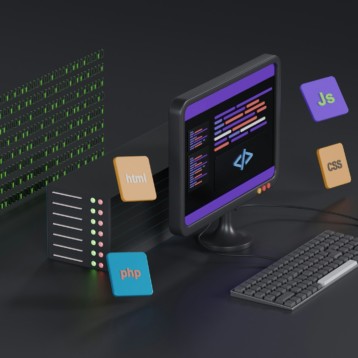
If you want to integrate security into your DevOps workflow, you would need to adopt the right tools and practices that merge your application development, operations, quality analysis, testing, and security teams under a common platform.
With DevSecOps, your goal will be to ensure that security becomes a part of the software development pipeline and a workforce inculcates the most secure practices and testing automation.
There is a steady rise in the popularity of DevSecOps among software development companies. Many organizations had combined development and operations teams under DevOps regulations and benefited from it in recent years.
But according to the latest trend, there is a higher need to integrate security into the process as well so that companies can find the vulnerabilities faster and release the codes. In this article, we are going to discuss some of the best practices that you can introduce to your organization to automate DevSecOps.
Automation Is the Key
One of the most essential reasons for implementing DevOps was to increase the speed of software coding. The success of operations in continuous integration and continuous deployment (CI/CD) environment depends on how fast the codes get finalized for production. However, if you want to integrate security as a part of the workflow, you would need to automate it with proper tools.
It is not only necessary to ensure that security protocols and tests get embedded in the entire development life-cycle. Since DevOps is not a manual process, there is no point if the security of the software is not automated. That does not mean that you put the automated security tests at the end of the development cycle just before production.
You need to ensure that automation of security is consistent throughout the DevOps practices. There are several test automation tools available in the market.
They have a range of capabilities that can analyze and test security measures throughout the software development cycle. These tools are more than capable of source code analysis, as well as monitor security protocols during the integration and post-deployment stages.
Intelligent Automation
When you are implementing automated security testing, you need to ensure that it gets done intelligently. When you are doing Static Application Security Testing (SAST) at the end of a day, we must ensure that you only scan the essential code changes that were done that day. It can be laborious if you run automated security scans on the source code for the entire application every day.
You can also embed automated Dynamic Application Security Testing (DAST) in the development cycle of the software. SAST tries to find potential security problems inside the security codes. However, DAST tools will try to find out vulnerable areas while running the application in real-time. So if you automate DAST for the new changes made to the code, you will be able to find out any laws that might be missed by SAST.
Check for Open Source Dependencies
Like most software companies, you must also be using a lot of open-source software in your applications. Audits have revealed that more than 96% of commercial software applications include open source components, and almost 60% of those applications contain security vulnerabilities.
They also found out that only 27% of these commercial software application development companies have the resources to automate, identify, and rectify these flaws that mostly arise from open source components. There is no denying that using open source software components can speed up the development process.
But your developers would never have enough time to review the libraries and documentation for those components. That is why you need to include automated tools in your DevSecOps operations so that you know whether the open source components are not causing any vulnerabilities in your codes.
Dependency checks are fundamental for DevSecOps to ensure that you do not use a third-party component with known security issues.
Do Not Pile up Too Much at Once
Developers can use SAST tools to scan the software codes as they write them so that they get instant notifications of any security issues. The tools also allow them to identify and rectify any vulnerable areas as part of their regular workflow. However, to ensure the success of the DevSecOps practices, you should not pile up too much work for your developers.
Therefore when you are implementing security practices and testing in the CI/CD chain, try to start small so that your developers can get used to the idea. For example, when you introduce a SAST tool in the development process, turn it on only to find SQL injection errors.
Once your developers get comfortable with identifying and rectifying errors while coding, you will be able to utilize the complete benefits of the automated tools.
Choose the Automation Tools Wisely
Not all automated security tools for agile DevOps are created equally, so there are certain aspects you must keep in mind while you choose one for your organization. For example, the tool you choose should be able to integrate security into the development pipeline and enable both teams to work together.
The developers must be able to use the tool easily to initiate scans and get the required results with the use of their existing toolset. The tool should also be able to achieve the results fast without too many false positives. False positives are extremely detrimental for a DevOps environment and can cause your system to collapse.
Security tools for DevSecOps are completely different from those created for other development models. It must be able to identify any vulnerabilities in the codes as your developers are creating the software.
One of the best ways to prevent software vulnerability is to ensure that the security issue does not become a code. Most of the DevSecOps practices and tools are still in the process of being perfected. But it is evident that security needs to be a part of every stage in the software development process. You can utilize these best practices to ensure that DevSecOps becomes an integral part of the organization.










